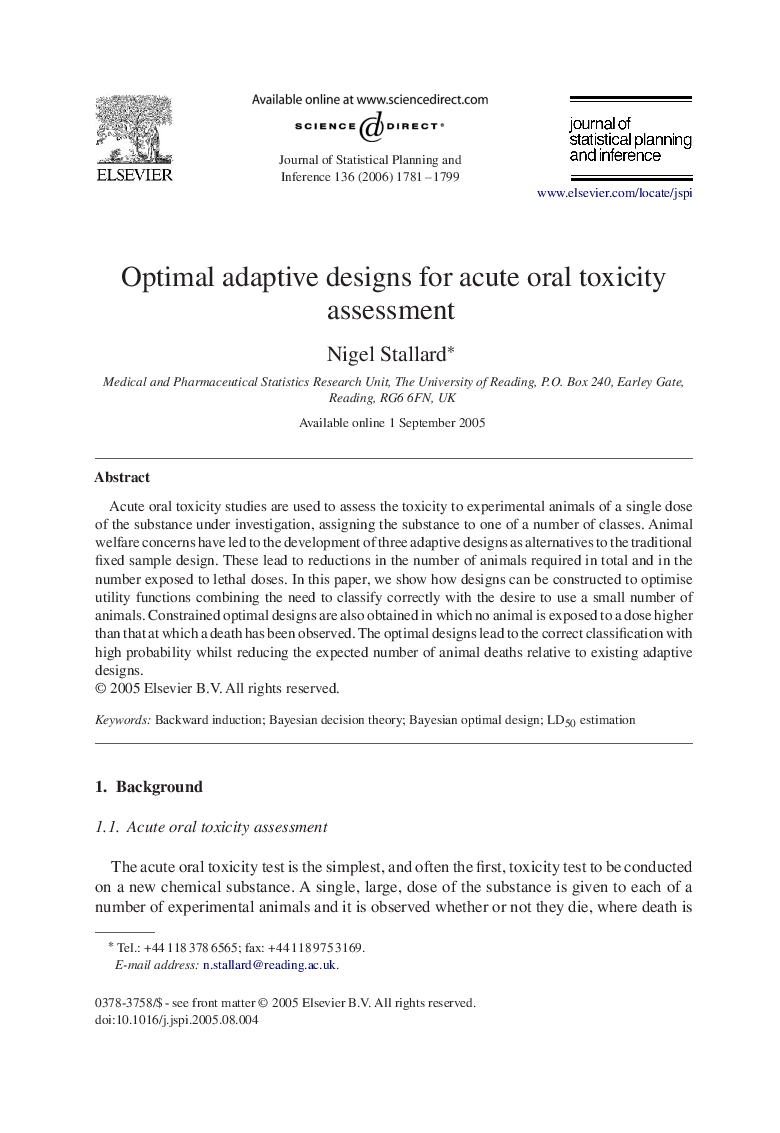| Article ID | Journal | Published Year | Pages | File Type |
|---|---|---|---|---|
| 1150725 | Journal of Statistical Planning and Inference | 2006 | 19 Pages |
Acute oral toxicity studies are used to assess the toxicity to experimental animals of a single dose of the substance under investigation, assigning the substance to one of a number of classes. Animal welfare concerns have led to the development of three adaptive designs as alternatives to the traditional fixed sample design. These lead to reductions in the number of animals required in total and in the number exposed to lethal doses. In this paper, we show how designs can be constructed to optimise utility functions combining the need to classify correctly with the desire to use a small number of animals. Constrained optimal designs are also obtained in which no animal is exposed to a dose higher than that at which a death has been observed. The optimal designs lead to the correct classification with high probability whilst reducing the expected number of animal deaths relative to existing adaptive designs.
